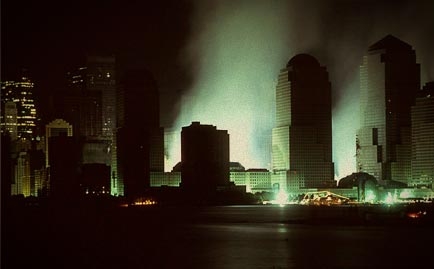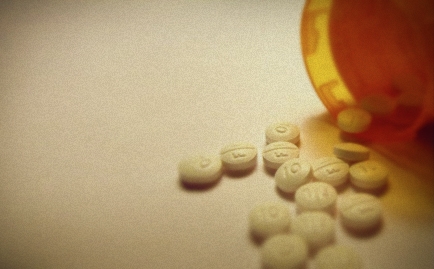
As an artist, I often find myself trying to answer the question, “Why art?” Why is art necessary in our lives and in our education? How can I justify investing so much of my time and expenses in being an artist and in helping others by advocating for their artistic expressions? Why do we need the arts in our local communities? I could begin to answer these questions by pointing out that we now have a lot of research pointing to the economic benefit of bringing art into communities. We also have efforts to scientifically prove that the arts help us directly in education, in improving children’s school grades and in helping them to engage better with their worlds. But usually, in gatherings for advocacy of the arts, I end up listening to people. I want to know what deeply matters to them. And I often find that art is already present in the areas that they are most engaged in and most passionate about. The man I may be speaking with may not know anything about art in New York, but he may talk about his child’s dream to become a dancer or an actor. Or about a movie that affected him deeply. He may speak of his business enterprises and may point out that businesses are starting to realize that the “bottom line” is not really sufficient; there is a “second bottom line,” or a third. Business schools are now inviting designers to discuss creativity and design and are beginning to apply these principles into business practices because workers are no longer content to work in bottom-line-driven companies. They want their whole person affirmed, and they want community. What I hear these workers stating is that they want their humanity back. And in that conversation, art always presents itself as an expression of humanity.
September 11th taught us that we can use our imagination either to
destroy lives or to save lives.
On 9/11 we had on the one hand militant hijackers who turned their
imaginative vengeance into determined evil acts. On the other hand were
firefighters who climbed the falling towers. We have to realize that
before any of these terrorist acts were committed, they were imagined.
We swim in the ecosystem of imagined actions. We are responsible for
how we respond to that power. We do have a choice between saving lives
and destroying lives. If we do not teach our children, and ourselves,
that what we imagine and how we design the world can make a difference,
the culture of cynicism will do that for us. If we do not infuse
creativity, if we do not take the initiative to help our children
imagine better neighborhoods and cities, despair will ruin their
imaginative capacities and turn them into destructive forces. These are
the lessons of 9/11.
One of my most frustrating moments as an arts advocate was seeing the Janet Jackson Super Bowl halftime fiasco, knowing that the show was being broadcast in China for the very first time. What do the Chinese think of us now? We in the United States have come to define ourselves by how we degrade ourselves, and we have exported that vision to the world.
When I traveled with The First Lady to represent the United States at the UNESCO general assembly several years ago,one of the UNESCO officials told us of her fears in America’s reengagement with UNESCO : “We are struggling to believe that the U.S. can bring more than McDonald’s, Coca-Cola, or Hollywood movies.” (I might add pornography to that list, but she was too polite.) We tried to convince her and other UNE SCO leaders that we have a very unique patronage system that encourages democratic patronage of the arts, such as the National Endowment for the Arts and the National Endowment for the Humanities. [Our] American forms of art, I would argue, are the greatest fruits of our democracy. And we have every reason to celebrate and broadcast with pride what freedom has brought us.
Tolstoy stated, “Art is not a pleasure, a solace, or an amusement; art is great matter. Art is an organ of human life, transmitting man’s reasonable perception into feeling.”
Art is a building block of civilization. A civilization that does not value its artistic expressions is a civilization that does not value itself. These tangible artistic expressions help us to understand ourselves. The arts teach us to respect both the diversity of our communities and the strength of our traditions. I encourage people not to segment art into an “extra” sphere of life or to see art as mere decorations. Why? Because art is everywhere and has already taken root in our lives. Therefore, the question is not so much “why art?” but “which art?” In other words, our worlds are filled with art that we have already chosen for our walls, our iPods, and our bookshelves. We become patrons of the arts by going to see movies, plays, and concerts or by watching television. We are presented with a choice, and this choice is a responsibility of cultural stewardship. Just as we have responsibility for natural resources, so do we have responsibility to be stewards of our culture. What, then, does the current cultural ecosystem look like? NE A research, such as Reading at Risk, is pointing to a cultural epidemic of disengagement. We are reading less and less; but even more problematic, in my mind, is how we are less engaged with civic activities, with nature, and even with sports!
I get to spend my days thinking and imagining, painting and writing. I think about my journey, which started when I was a child simply wanting to draw and express. I had encouraging parents, and I am blessed with a wife who suffers alongside me. The life of an artist is never easy, but I take it seriously because I know that imagination has consequences.
But I do on occasion go back to that question, “why art?” because it was a question I addressed to myself in a diary for a creative writing class in college many years ago. My professor wrote back in his comments, “Your questions are valuable, and I encourage you to push that question further, as many of the writers and artists have done in the past: Why live?”
Perhaps that’s why we need the arts. By continuing to create and imagine a better world, we live. We have no alternative today. The path of apathy, the path of cynicism, and the path of the terrorists have incarnated their realities in our backyards. To have hope is no longer an optimist’s escapism—it is the only path to the future.
Originally presented as a speech July 2005 in Leesburg, Florida





















